Trollius laxus ssp. laxus , spreading globeflower, is a low growing herbaceous perennial that blooms in spring. It is rare plant in the buttercup family.
Flowers
The flowers are produced singly on the top of a stem. The yellow/cream colored flowers are up to 2 inches across and are shallow bowl-shaped. What looks like petals are actually yellow colored sepals, 5-7 of them. The 10 to 15 petals are modified yellow to orange short stubby structures with nectaries at the base. Sometimes these modified petals are referred to as staminodes. There are numerous stamens (20-80) and 5-28 individual pistils in the center.
In this newly opened flower, flower part labels show the outer circle of sepals, then petals, then stamens and then the inner most pistils. The stamens and pistils are not functional yet.
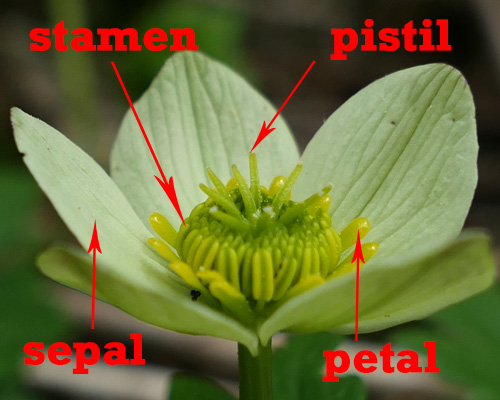
In the mature flower, the stamens are spreading outward and the outer rings release pollen first. The stigma appear to have some pollen on them hopefully from another plant.
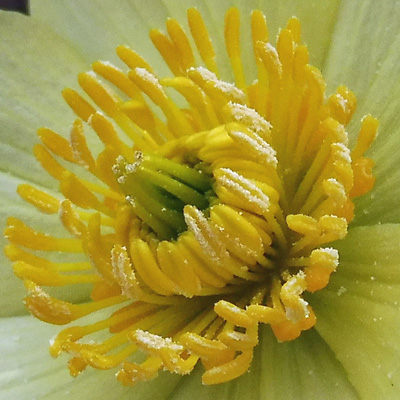
Two more flower photos.
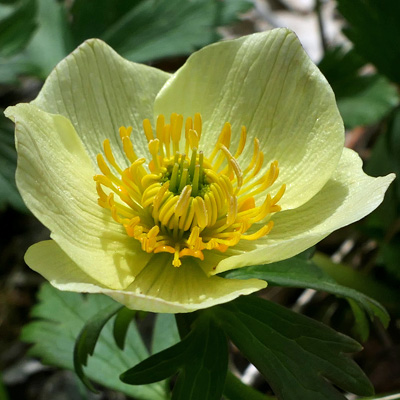
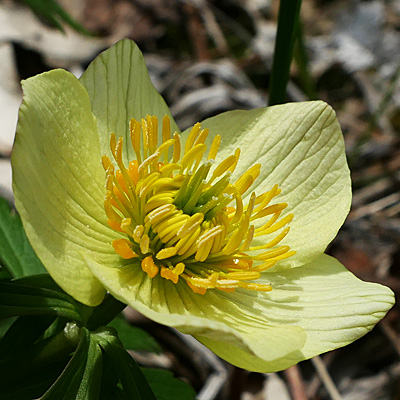
Fruit
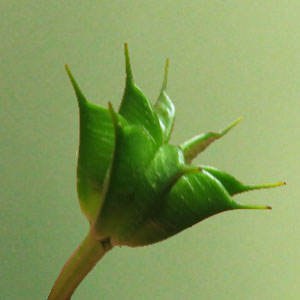 Immature fruit.
Immature fruit.
Leaves
Leaves: Spreading globeflower (Trollius laxus) has both basal leaves and cauline (on the flower stalk) leaves just below the flowers.
The basal leaves have petioles (leaf stalks) 2 to 12 inches long. The leaf blade is palmately divided, deeply cleft into 5-7 coarsely toothed segments. The lowest leaf photo shows both a basal leaf and cauline leaves. The older leaves look different and very much like a wild geranium (Geranium maculatum).
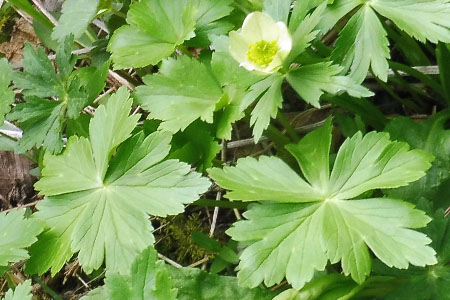
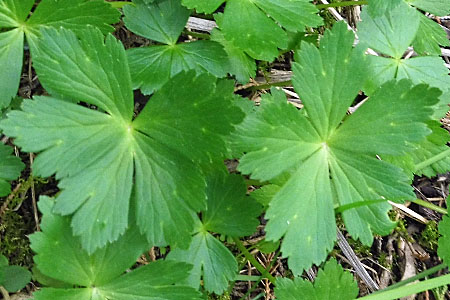
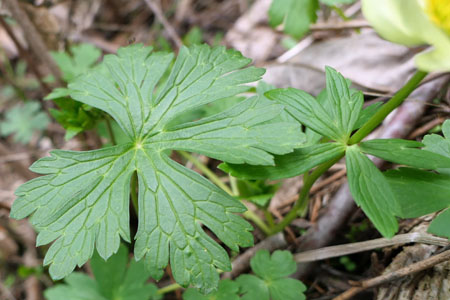
The cauline leaves: The cauline leaf appears sessile and is deeply cleft into 2-5 lobes. They are similar but smaller than the basal leaves. In the first photo below, the leaf attachment is visible. In the second photo from a different angle, the leaf appears to encircle the stem below the flower.
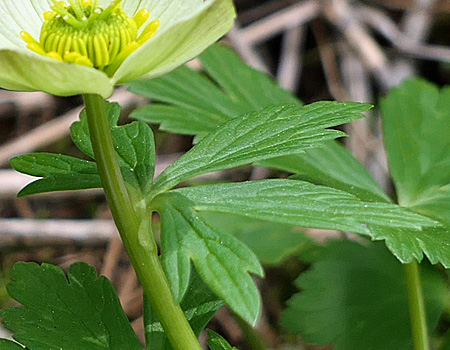
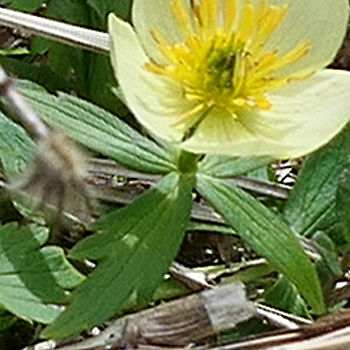
Plant & Habitat
Spreading globeflower plant is about 4 to 20 inches tall with one or more upright stems, each stem with a single flower on the top.
Spreading Globeflower usually grows in wetlands such as fens or along the edges of swamps that are fed by highly alkaline groundwater. Fens are wetlands in which the high water table is generally maintained by a constant flow of mineral-rich groundwater. Succession of most fens result in herbaceous vegetation being replaced by shrubs. Some conservation effort is being directed at removing some invasive shrubs from the areas.
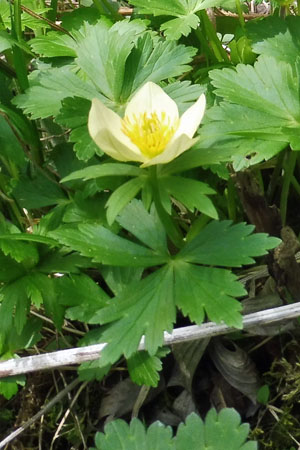
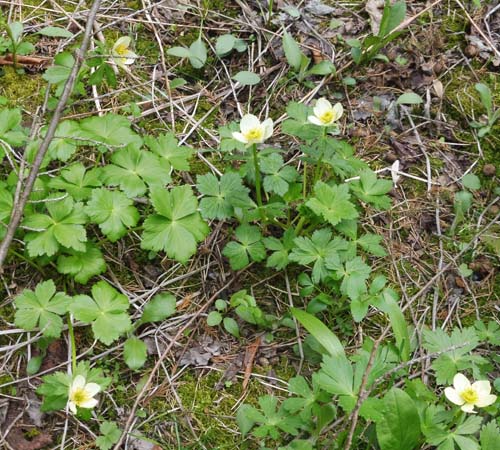
Text by Millie Ling and all photos by Hubert & Millie Ling. Photos: flowers - April 28, 2021, fruit - May 24, 2017, Sussex County
Rarity
There is only one species of Trolius laxus in North America and the plants are located in two separate population areas, one in the west and the other in the north east. The two populations are considered subspecies with T. laxus ssp. laxus being the northeast subspecies. The northeast populations are in NJ, NY, CT, PA and OH. However this subspecies is globally rare with a subspecies ranking of T3S1. The populations have been declining. In NJ, records indicate 37 occurences in Bergen, Passaic, Morris, Sussex and Warren counties back to the early 1800s. The current remaining 14 locations are in Sussex and Warren counties. There is conservation work on this plant. Please see reference below.
Additional information
Additional information / references:
- Many references are being omitted so as not to draw attention to the location of the plants in NJ.
- Here is a site that sponsors and reported conservation work on spreading globeflower: https://saveplants.org/plant-profile/?CPCNum=4351
- The USDA website shows its distribution in the US and other information, https://plants.sc.egov.usda.gov/home/plantProfile?symbol=TRLAL
- Rarity in northeast:https://explorer.natureserve.org/Taxon/ELEMENT_GLOBAL.2.142297/Trollius_laxus_ssp_laxus
- Here is an excellent article on how NY is conserving this plant in natural locations and in planted locations: https://cornellbotanicgardens.org/conserve/plant-conservation/native-rare-plant-conservation/
- eFloras: http://www.efloras.org/florataxon.aspx?flora_id=1&taxon_id=233501318
- Go Botany: https://gobotany.nativeplanttrust.org/species/trollius/laxus/